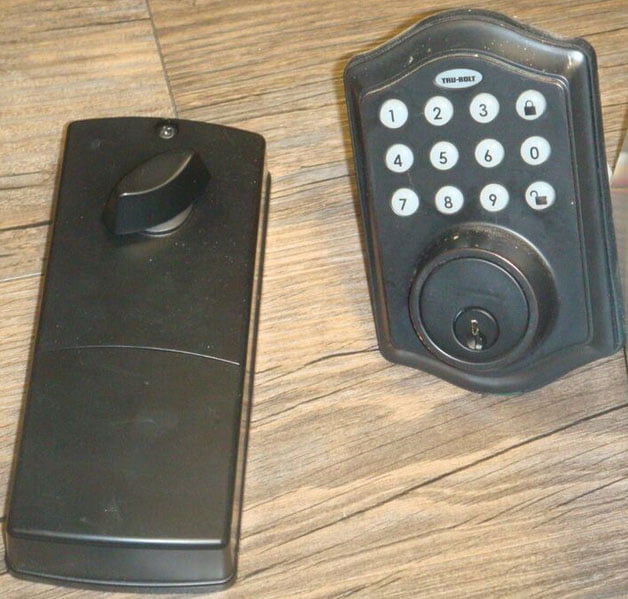Home security has undergone a significant transformation with the advent of electronic locks, and Tru-Bolt stands out as a reliable name in this field. These locks combine advanced technology with user-friendly features, offering a secure and convenient solution for safeguarding homes and businesses. In this extensive guide, we’ll explore the nuances of programming a Tru-Bolt electronic lock and delve into additional information to help you make the most of its features.
Understanding Tru-Bolt Electronic Locks
Tru-Bolt electronic locks leverage a combination of electronic components and mechanical systems to provide a robust security solution. Keyless entry options, such as keypads and proximity cards, add an extra layer of convenience. Before diving into programming, it’s crucial to understand the different models and variations that Tru-Bolt offers. Familiarize yourself with the lock’s specifications, features, and potential add-ons by consulting the user manual and the official Tru-Bolt website.
Preparation for Programming
- Read the User Manual: The user manual is your key to unlocking the full potential of your Tru-Bolt electronic lock. In addition to programming instructions, it contains valuable information about lock specifications, maintenance tips, and warranty details. Understanding the manual will empower you to make informed decisions regarding your lock’s configuration.
- Gather Necessary Tools: Before initiating the programming process, ensure you have all the required tools. Tru-Bolt locks typically require standard tools like a screwdriver for installation and battery replacement. Having these tools on hand will streamline the setup process.
Programming Steps:
Step 1: Access the Programming Menu
Locate the Programming Button: Identifying the programming button is the first step. This button initiates the lock’s programming mode, allowing you to customize various settings.
Enter Programming Code: Tru-Bolt locks often come with a default programming code. Refer to the user manual to find and enter this code using the keypad to access the programming menu.
Step 2: Set Master Code
Access Master Code Menu: Navigate to the Master Code menu within the programming interface. The Master Code serves as the primary credential for accessing and modifying the lock’s settings.
Enter Master Code: Choose a unique Master Code that is easy for you to remember but challenging for others to guess. Follow the instructions in the user manual to input and confirm the Master Code.
Step 3: Program User Codes
Navigate to User Code Menu: Within the programming menu, locate the section for programming user codes. These secondary codes are convenient for granting access to family members, friends, or service providers.
Enter User Codes: Input the desired user codes following the provided instructions. Assign distinct codes to different users to enhance access control and security.
Step 4: Configure Additional Settings
Explore Advanced Features: Tru-Bolt electronic locks often offer advanced features such as time-based access, one-time codes, and audit trails. Explore these options and configure them based on your specific security requirements.
Adjust Lock Sensitivity: Some models allow you to adjust the lock’s sensitivity. Refer to the user manual for guidance on making any necessary adjustments to ensure optimal performance.
Step 5: Test the Lock
Lock and Unlock: After programming the Master Code and user codes, perform a series of tests to ensure the lock operates smoothly. Use the codes you’ve programmed to lock and unlock the door, checking for any irregularities in the process.
Ensure Smooth Operation: Pay attention to the responsiveness of the lock. If any issues arise during testing, consult the troubleshooting section in the user manual for guidance on resolving common problems.
Step 6: Secure Backup Codes
Generate Backup Codes: Tru-Bolt locks may allow you to create backup codes for added security. These codes can be invaluable if you forget the Master Code or encounter issues. Follow the user manual to generate and securely store these backup codes.
Review Security Measures: Take the time to review and adjust security measures, such as anti-tamper features and incorrect code lockout periods. Tailoring these settings enhances the overall security of the lock.
Advanced Tips for Maximizing Security
Tip 1: Enable Time-Based Access
Tru-Bolt locks often feature time-based access controls, allowing you to specify when certain user codes are valid. Utilize this feature to restrict access during specific hours, adding an extra layer of security.
Tip 2: One-Time Codes for Temporary Access
For short-term visitors or service providers, consider utilizing the one-time code feature. This code provides access for a single use, enhancing security by minimizing the risk associated with sharing permanent user codes.
Tip 3: Audit Trail for Activity Monitoring
Explore the audit trail feature if your Tru-Bolt lock supports it. This functionality records a chronological log of lock activities, providing you with insights into who accessed the lock and when. Regularly review the audit trail for added security awareness.
Tip 4: Firmware Updates
Stay informed about firmware updates for your Tru-Bolt lock. Manufacturers may release updates to address security vulnerabilities or enhance features. Checking for updates periodically ensures that your lock remains up-to-date and secure.
Maintenance and Troubleshooting
- Regular Battery Checks: Electronic locks rely on batteries, and it’s essential to monitor their status regularly. Most Tru-Bolt locks will provide low-battery warnings, but proactive battery replacement ensures uninterrupted operation.
- Keep Components Clean: Dust and debris can affect the performance of electronic locks. Periodically clean the keypad and other components using a soft, dry cloth to maintain optimal functionality.
- Refer to Troubleshooting Guide: If you encounter any issues with the electronic lock, refer to the troubleshooting guide in the user manual. This comprehensive guide provides step-by-step instructions to identify and resolve common problems.
- Security Audits: Conduct periodic security audits to ensure the lock’s settings align with your evolving security needs. Review and update user codes, check access logs, and adjust settings as necessary.
Conclusion
Programming a Tru-Bolt electronic lock is a key step in enhancing the security of your home or business. By following the comprehensive steps outlined in this guide and exploring advanced features and tips, you can maximize the potential of your Tru-Bolt lock.
Remember that security is an ongoing process. Regular maintenance, proactive monitoring, and staying informed about the lock’s capabilities contribute to a secure and reliable electronic locking system. With the right knowledge and approach, your Tru-Bolt electronic lock will not only provide peace of mind but also serve as a cornerstone in your overall security strategy.
You might also like,
- OrangeIOT Keypad Lock Programming Instructions
- The Best Smart Locks for Rentals and Airbnb in 2024
- Troubleshooting Guide: Kwikset Lock Not Working After Battery Change

